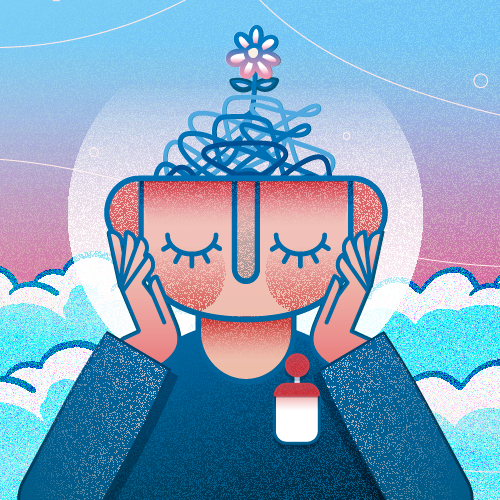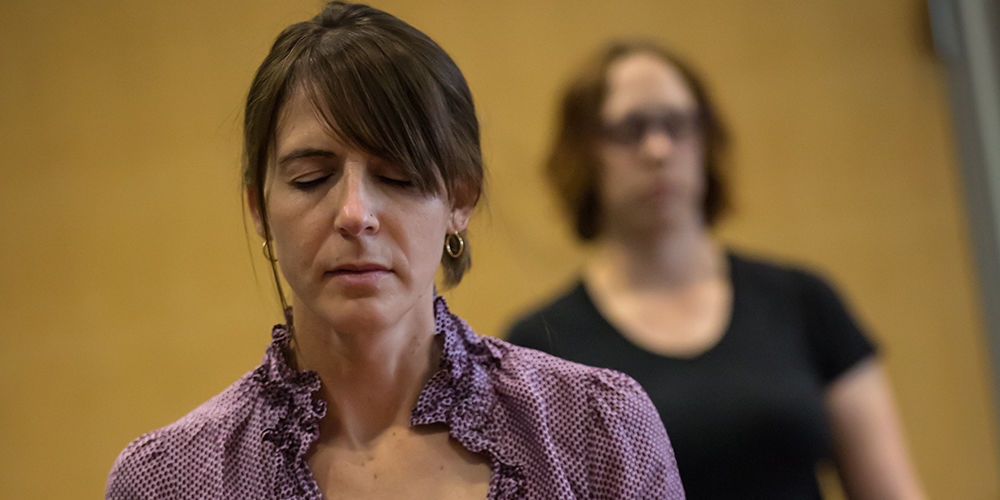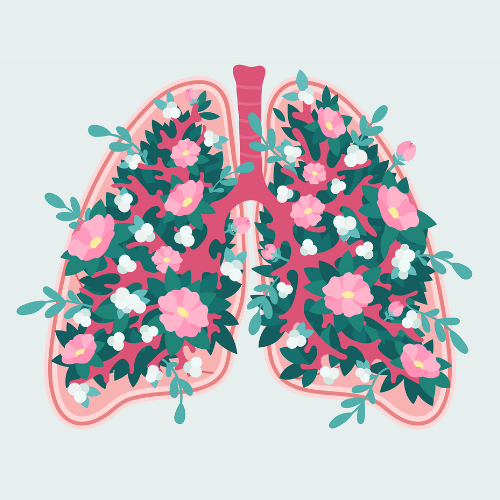Mindfulness in Medicine Toolkit

Click here for a list of resources you and your team can use to practice mindfulness and increase your well-being.
About this practice
How long will this take? 4-10 minutes.
How do I prepare? Take a seat on the floor (we recommend finding a cushion) or sit in a steady, comfortable chair and place both feet on the floor.
How should I feel? It’s common for the mind wander off or to feel sleepy. Try to let go of expectations of how you’re supposed to feel and simply follow along.
Cultivate Awareness
we have exercises for the body, there are exercises for the mind and heart, formal and informal practices, to cultivate mindful awareness.
The following two podcasts are guided meditations designed to help you fit mindfulness into a busy schedule. Download (or just hit play) whenever you find the time or feel the need to unwind.
As with other forms of exercise, it is important to tune in. If you experience moderate to high levels of discomfort or emotional and/or physical distress, please stop and consult with a qualified or certified mindfulness teacher, mental health provider, or medical practitioner.
Annotated transcript from Trinh Mai's Awareness of Breath guided meditation below.
Where to begin
Find a sitting posture that’s both steady and comfortable, either on a chair or on a cushion on the floor. If sitting in a chair, both feet are on the floor. What does it feel like to be sitting? Feel into the parts of the body that are supported by the floor, cushion, or chair. The lower body is grounded and the spine and back rise up, yet are not rigid—like a majestic mountain, sitting with dignity.
Chest and heart open, shoulders softly resting on your sides, the eyes can be closed or lowered and softly gazing. Face and mouth relaxed, notice where your attention is presently, acknowledging that, and then gently and firmly turning your attention to the feeling of breathing. Are you inhaling or exhaling? See if you can escort the breath as it moves in and out of the body. Feel the body expand and contract, not needing to control the breath in any way, simply being with it.
Notice if your mind has wandered off to thoughts of the past or future. This is completely normal. Acknowledge where your mind has wandered off to, then gently and firmly bring your attention back to the breath—to the inhale and exhale.
Where do you feel your breath most vividly? Is it when air enters the nostrils? The chest or abdomen as it rises and falls? Find that spot and allow your attention to rest right here.
Focus of attention will move from the breath to thoughts of the past or future, or perhaps sensations in the body. Again, this is completely normal. When you notice this, it’s an opportunity to wake up from being lost and distracted. Taking the opportunity to simply come back to the breath, breathe in and feel the breath moving in. Notice the pause between the inhale and exhale. Breathe out and feel the breath moving out, releasing into space, being with the exhale for as long as you can.
Each in breath is a chance to begin again, and each out breath is a chance to let go. Noticing where your focus is now, if it has wandered away from the breath, acknowledge what has gotten your attention, then gently and firmly bring attention back to the breath. That’s it. That’s the practice.
Allow the breath to support you to be in the present moment—an anchor that you can always return to. Just knowing this breath, this essence of being alive. Feeling the sensation of each breath as it moves in and through the body, and being with your life, one breath at a time.
As the bell rings, stay present with the breath until you can no longer hear the sound of the bell. Noticing how you feel in this moment, with awareness and intention transition into your next activity.
Heidi O'Donoghue
Trinh Mai
Mindfulness instructors Trinh Mai and Rob Davies guide us through S.T.O.P., a simple mindfulness practice to help mitigate our stress response.
GME Wellness Director Rob Davies explores the practice of gratitude journaling—writing down “three good things” every day for two weeks. This simple exercise can profoundly impact your overall sense of wellbeing.
Mindfulness instructors Rob Davies and Heidi O’Donoghue guide us through the body scan, a simple meditation that helps relax the body — and as a bonus, can also help you sleep.

